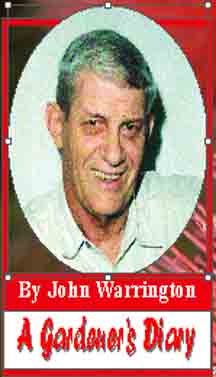The history of West Indian gardens is absolutely fascinating and the wealth of plants to be found in the region is due largely to the botanical gardens established in the middle of the 19th century. The names Bath, Castleton, and Chincona probably mean little to most people this Sunday morning. But not to Jamaicans, for in the 19th century there were very important botanical gardens on an island which then had the most important research centre for botanical science.
The low level Bath Garden contained many medicinal plants, sago palms, litchi, tea plants, camphor, and trees producing cabinet wood and dyes. It also contained the first specimens of the akee (now covering many of the islands) brought from Africa by slave ships, breadfruit brought by Captain Bligh, and mangoes, cinnamon, pandanus, and Asian ebony taken from a French warship by Admiral Rodney. The Castleton garden with its 100 inches of rain a year was stocked by plants brought to it from the Royal Botanic Gardens at Kew, and was considered one of the great gardens of the world, containing teak trees brought from Burma, and fig trees from India.

In the second paragraph I mentioned Asian ebony growing in Jamaica. The true ebony comes from India and Sri Lanka, is called Diospyros ebenum and is one of six different species of plants which people call ebony. It illustrates perfectly the need to be accurate when referring to plants, and why Latin names are used to give accuracy in cases like this. The West Indies has its own ebony tree (called Albizzia lebbek), belonging to the legume family (peas and beans) and totally unrelated to true ebony. In Trinidad it is called Woman’s Tongue, and the shak shak in Barbados. The shak shak is a small to medium-sized tree which provides shade to pedestrians on the move, but its main interest is its seed pods which are produced in profusion. They are about 18 inches long and as they ripen and become drier the seed rattles gently. They will grow in Guyana but seem to prefer the Mediter-ranean climate of Barbados where they thrive and grow by the thousand, and where the name ‘shak- shak’ seems particularly appropriate.
The legume tree which does grow well in Guyana includes the apple blossom cassia (Cassia javanica) which will produce long cylindrical seed pods about two feet long, each segment containing one disc like seed which will germinate after a time fairly easily. The apple blossom cassia does look remarkably like true apple blossom in flower.
The Georgetown Botanical Gardens are well over a hundred years old and the creator, G S Jenman is buried in St Sidwell’s churchyard. He played a great part in the original development of the gardens, not least of which is surrounding Bourda Cricket Club with its trees. But sadly not much remains of the framework he created for the gardens although they still remain one of the most popular places in the city. May your God go with you wherever you are in Guyana.






